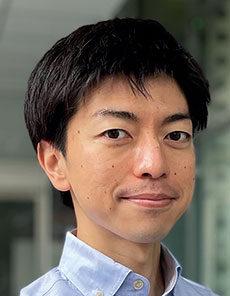Disclaimer: machine translated by DeepL which may contain errors.
When I saw a presentation with the same title as my paper
Hidemaro Suwa (Assistant Professor, Department of Physics)

It must be a nightmare for any researcher to see a research presentation with the same title as his or her paper before publication. It would be a nightmare for any researcher to see the publication of a paper with the same title as his or her own before publication. I never imagined that I would experience such a shock with the first paper I ever wrote. That was when I was a Doctoral student. At the time, I was doing research on Monte Carlo methods, computer simulations that use probability, and I was trying to find a way to make the calculations more efficient through a process of trial and error. I was trying to find out what I could do with a similar idea when I came across an algorithm that had been devised in the 1970s. I won't go into the details, but it was possible to optimize the probability using pictures like the ones in the figure instead of mathematical formulas. It is just like playing the game Tetris. Even more interestingly, it was possible to successfully calculate the probability without satisfying a condition called "detailed balance," which is usually used in the Monte Carlo method. At the time, few methods were known for calculating without this condition, so I thought this was a good discovery.
But then came the hard part. I searched through textbooks and papers on Monte Carlo methods in various fields to find out whether this was really a new discovery . Since this method is used in an extremely wide range of fields, there were literally mountains of textbooks. After studying such a vast amount of previous research, I was finally able to gain confidence in the method. The discovery I made was a new research direction, a research topic that almost no one had tackled yet. This must be a good paper to write. I took my time and carefully finished the paper .)
At the same time, a major international conference in the field of statistical mechanics was held in Australia. I attended the conference with great enthusiasm, bringing with me a pre-publication paper to present the results of my new research. It was my first paper and my first overseas conference presentation. I headed for the conference venue, feeling a little excited about my first experience. However, what awaited me there was the nightmare I described at the beginning of this article. To my surprise, there was a presentation with almost the same title as the paper I was holding in my hand. No way! It was supposed to be a study that no one had worked on yet: ....... This can't be right. ...... Suddenly, I felt as if my paper was a worthless piece of paper, and for a moment, my eyes went completely black. At any rate, I had to check the contents of the paper. I recomposed myself and checked the contents of the presentation, and found that the goal of the research was exactly the same as my own research, but the approach seemed to be different. I was relieved to find that the content was not the same, but then I realized that there was another person presenting on the same research theme. Suddenly, three groups of researchers had independently started their own research projects, which had not been conducted for decades. I was very surprised at this strange coincidence.
 |
|
| Comparison of algorithms used in Monte Carlo. The area of each color represents the probability, and the computational efficiency is determined by the way the colors are rearranged. In the author's algorithm (right), all colors are placed in different boxes and the probability is well optimized. | |
It is actually a good thing that other researchers join the research theme that I started working on. Later, this research theme expanded greatly, and researchers in various fields such as mathematics, statistics, physics, chemistry, and informatics began to work on it. Nowadays, international research meetings are frequently held. After waking up from what felt like a nightmare, the sky was brighter than before.
Note: Hidemaro Suwa and Synge Todo, Markov Chain Monte Carlo Method without Detailed Balance, Phys. Rev. Lett . 105, 120603 (2010).
Faculty of Science News welcomes essay submissions. We welcome all submissions, regardless of whether they are self-recommended or not. We especially welcome submissions from Faculty and graduate students. However, the Communications & Public Relations Committee will decide whether or not to publish your essay.
Please send your contributions to rigaku-news@adm.s.u-tokyo.ac.jp.
Published in the November 2021 issue of Faculty of Science News


